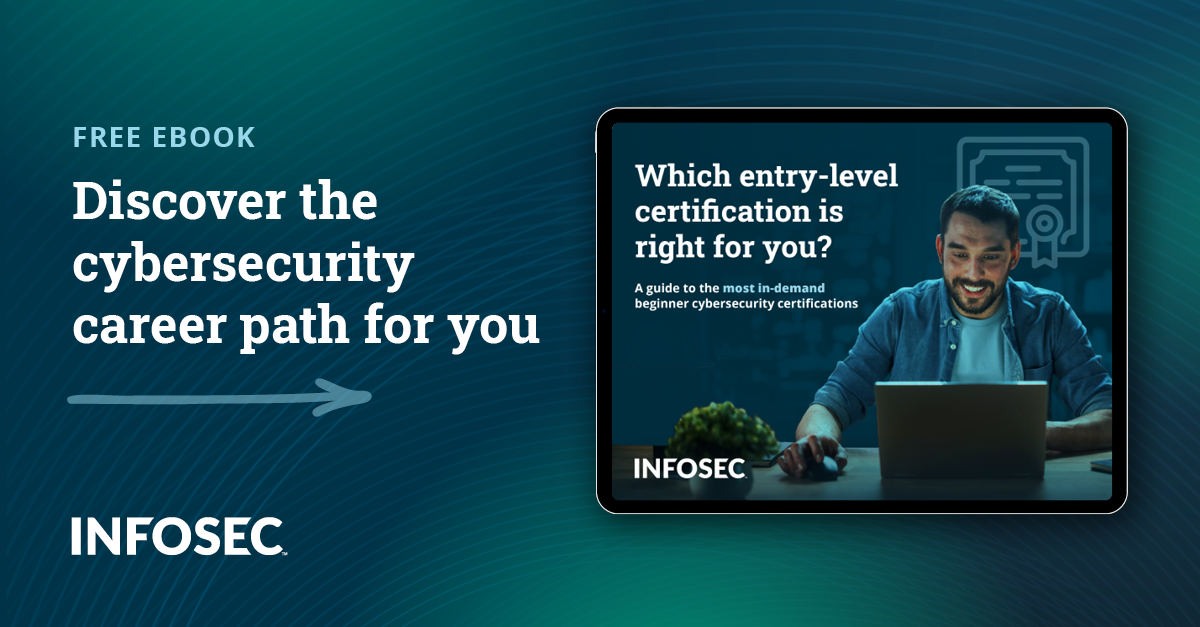Changes to CompTIA’s A+ exam (220-1001 and 220-1002 / 220-1101 and 220-1102) [2022 update]
The latest CompTIA A+ exam series, 220-1101 (Core 1) and 220-1102 (Core 2), became effective in April 2022, and the old series, 220-1001 and 220-1002 retired on Oct. 20, 2022. The new version reflects current best practices and technologies for frontline technical support roles better prepared to troubleshoot and problem-solve a wider variety of security issues, ranging from networking and operating systems to mobile devices.
Earn your A+ certification, guaranteed!

CompTIA presents its credential as designed to ensure that the certified professional is an expert in the following tasks:
- Install, configure and maintain computer equipment, mobile devices and software for end users
- Service components based on customer requirements
- Understand networking basics and apply basic cybersecurity methods to mitigate threats
- Properly and safely diagnose, resolve, and document common hardware and software issues
- Apply troubleshooting skills and provide customer support using appropriate communication skills
- Understand the basics of scripting, cloud technologies, virtualization, and multi-OS deployments in corporate environments
Unlike other certifications that require passing one exam, CompTIA A+ consists of two parts (Core 1 and Core 2). Note that if you have already passed the 220-1001 exam or are studying for it currently, you will want to take and pass 220-1002 before October 20 because CompTIA doesn’t allow you to mix exams from two different series.
To get CompTIA A+ certified, you must pass two exams from the same series — either 220-1001/220-1002 or 220-1101/220-1102.
As you prepare for your exam, ensure to review the exam objectives and study guides related to the version you are testing for. You’ll be expected to have a good grasp on the concepts listed in the domains and be able to answer a combination of multiple-choice questions (single and multiple responses), drag and drops and performance-based questions. CompTIA’s A+ Study Guide, self-study books or specific A+ training courses to fit your particular learning style and schedule make it possible to start learning right away.
What’s different: An overview
While the previous series placed a large emphasis on the areas of security, cloud, networking and device connectivity, as well as on hardware, mobile and Windows, the new CompTIA A+ version focuses on the technologies and skills IT pros need to support a hybrid workforce, including increased reliance on software as a service (SaaS) applications for remote work to the changes from cloud virtualization and internet of things (IoT) device security to data management and scripting. There is also more on remote troubleshooting to correct common software, hardware or connectivity problems.
Here’s a breakdown of each exam’s version for comparison:
Core 1, 220-1001
- Mobile Devices (14%)
- Networking (20%)
- Hardware (27%)
- Virtualization and Cloud Computing (12%)
- Hardware and Network Troubleshooting (27%)
Core 1, 220-1101
- Mobile Devices (15%)
- Networking (20%)
- Hardware (25%)
- Virtualization and Cloud Computing (11%)
- Hardware and Network Troubleshooting (29%)
Core 2, 220-1002
- Operating Systems (27%)
- Security (24%)
- Software Troubleshooting (26%)
- Operational Procedures (23%)
Core 2, 220-1102
- Operating Systems (31%)
- Security (25%)
- Software Troubleshooting (22%)
- Operational Procedures (22%)
As you can see, the areas covered by the domains have not changed. What has changed is the percentage assigned to each topic to better reflect what is important in today’s workplaces.
Digital transformation is one of the hottest topics for organizations, and relying on trained support professionals who can ensure a smoother implementation of newer, more complex technology and the security of assets is paramount. Also, as the workforce shifts towards a more hybrid approach with more opportunities to work remotely, problem-solving abilities and customer service are some of the most sought-out skills, together with knowledge of virtualization, cloud and scripting.
New core 1 exam objectives: Emphasis on mobile security, networking, hardware as well as virtualization and cloud computing
The 220-1101 exam covers the knowledge and skills required to support various IT infrastructures, from implementing Client Virtualization and Cloud Computing to Supporting and Troubleshooting Mobile Devices and Network Connections. You will learn how to confidently diagnose and correct common hardware or connectivity problems.
In line with the tasks that professionals are faced with today’s companies and organizations, this test covers more in-depth laptop security (with biometrics and, especially, face and fingerprint recognition), the migration of data to SSD drives and the newest display technology. Mobile connectivity is also covered with the 5G and more attention to mobile device synchronization.
The Networking domain will include questions on Wi-Fi 6 and more emphasis on the configuration and maintenance of small office/home office (SOHO) networks. Hardware will include newer technology like Cat 6a, Double Data Rate 5 (DDR5) and 3-D printers.
More emphasis on desktop virtualization and client-side virtualization are also included, together with more questions on troubleshooting scenarios.
For more specifics, see the Core 1 exam objectives.
New core 2 objectives: Emphasis on operating systems, network security, software technologies and data management
The 220-1102 exam covers the knowledge and skills required to install and configure operating systems; use common methods for securing mobile and embedded devices; apply best practices for SOHO wireless and wired networks; execute application installation and configuration concepts; carry out software troubleshooting; act upon standard operating procedures. In essence, you will know how to set up, configure, manage, and troubleshoot various operating systems, configure mobile and desktop devices and applications, and offer support when necessary.
A large focus of the first domain will be on Windows 10 and its features and tools and Linux and macOS. The Security and Software Troubleshooting Domains will build upon the old version, simply adding a reference to the newest issues and practices, including mobile and embedded devices security and user education to prevent social engineering and malware exposure.
Reimaging and restoring devices will also be within the topics, and troubleshooting mobile OS and application security issues. The increased focus on some of these topics directly consequences the move toward a hybrid/mobile workforce. It is also evident in the Operational Procedures domain, focusing on ticketing systems, documenting actions and appropriate professional behavior.
For more specifics, see the Core 2 exam objectives.
New approach to operational procedures
As with previous A+ Core 1 & Core 2 exam objectives, CompTIA’s certification considers how the IT profession is evolving. Since even entry-level technicians need to adapt to more complex environments, they need to understand operational procedures in various scenarios. Some of the Core 1 and 2 series changes focus on aspects like the importance of appropriate documentation and policies, as well as basic change-management best practices. You will learn to follow and embed best practices for environmental protection, safety, professionalism, and communication.
Why you should obtain A+ certification
The A+ certification is considered one of the best credentials for those pursuing a career in IT support and help desk operations.
CompTIA reports that “according to Burning Glass Technologies Labor Insights, CompTIA A+ is the number-one cited certification for IT support jobs, with nearly 1 in 10 ads including it.”
As a vendor-neutral and entry-level credential, it covers many IT skills, from hardware and networking to operating systems and security. With the launch of a new exam version, the refreshed A+ Core Series has expanded coverage of mobile and cloud computing and virtualization services, addressed enhanced security and advanced software troubleshooting procedures across all operating systems, including Windows 10, macOS, Android and Linux OS.
So, whether you’re new to the profession or have a couple of years under your belt and want to expand your IT knowledge, consider the A+ certification to go far beyond basic computer set-up, repair and troubleshooting skills to prove much needed problem-solving skills in support of today’s core technologies from security to networking to virtualization and more.
For more on the CompTIA A+ certification, view our CompTIA A+ certification hub.
Sources:
- A+, CompTIA
- A+ Core 1 exam objectives, CompTIA
- A+ Core 2 exam objectives, CompTIA
- What’s New on CompTIA A+?, CompTIA
- A+ Core 1 & Core 2 Exam Objectives Comparison, CompTIA
- Is CompTIA A+ Certification Worth It?, CompTIA
- What Is CompTIA A+ Certification?, CompTIA
- 7 Ways to Prep for a CompTIA Exam, CompTIA



